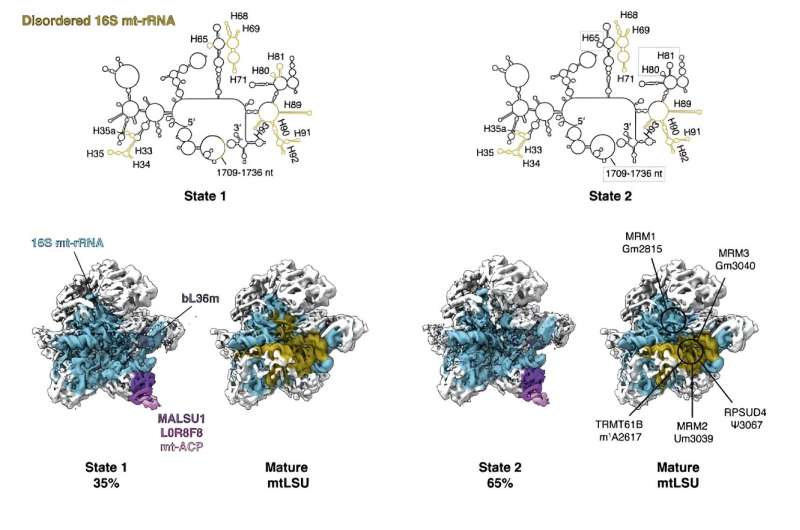This article has been reviewed according to Science X's editorial process and policies. Editors have highlighted the following attributes while ensuring the content's credibility:
fact-checked
peer-reviewed publication
trusted source
proofread
Novel protein involved in mitochondrial gene expression identified

Researchers at the Department of Medical Biochemistry and Biophysics at Karolinska Institutet have characterized a novel GTPase involved in ribosome production in mitochondria. The study, published in Nature Communications, provides new insights into the process that enables mitochondria to produce energy.
Ribosomes are complex machinery that produce proteins in each cell of our body. Two types of ribosomes exist in mammals: one in the cytosol, and the other in the mitochondria. In mitochondria, mitoribosomes synthesize the small subset of proteins responsible for oxidative phosphorylation and energy production. Their dysregulation contributes to complex pathologies, including neurodegenerative and metabolic diseases.
Building mitoribosomes is a complex process
The synthesis of mitoribosomes is a multistep process that includes the folding of ribosomal RNAs (12S and 16S rRNA) and the ordered association of 82 mitoribosomal proteins to the growing ribosome. This process is facilitated by the coordinated action of multiple accessory assembly factors that assist ribosome assembly from the early stages to the completion of the fully functional macromolecule.
Importantly, defects in the intricate machinery responsible for building mitoribosomes can lead to mitochondrial diseases, a group of metabolic pathologies affecting multiple organs, for which there is currently no cure.
In bacteria, which share an evolutionary history with mitochondria, several GTP-binding proteins are involved in ribosome assembly. The authors of the study investigated a homolog of the bacterial GTPase ENG that resides in mitochondria, but whose function had not been previously explored.
Using a combination of proteomic, transcriptomic, and structural analyses, they showed that GTPBP8 is essential for the correct assembly of the mitoribosome's small subunit. Depletion of GTPBP8 results in impaired mitochondrial translation, underscoring its fundamental importance to cellular metabolism.
"GTPBP8 is just one of many crucial factors involved in mitoribosome assembly, and we are only at the beginning of the scientific journey to characterize this intricate process," says Miriam Cipullo, first author and a former Ph.D. student in Rorbach lab at the Department of Medical Biochemistry and Biophysics (MBB).
"Our study uncovers vital insights into the molecular mechanisms of mitoribosome biogenesis, highlighting GTPBP8 as a key candidate gene, which can be implicated in mitochondrial diseases. This exciting discovery opens new avenues for understanding and potentially treating these complex conditions in the future," says Joanna Rorbach, Associate Professor at the Department of Medical Biochemistry and Biophysics at Karolinska Institutet.
More information: Miriam Cipullo et al, GTPBP8 plays a role in mitoribosome formation in human mitochondria, Nature Communications (2024). DOI: 10.1038/s41467-024-50011-x
Journal information: Nature Communications
Provided by Karolinska Institutet



















